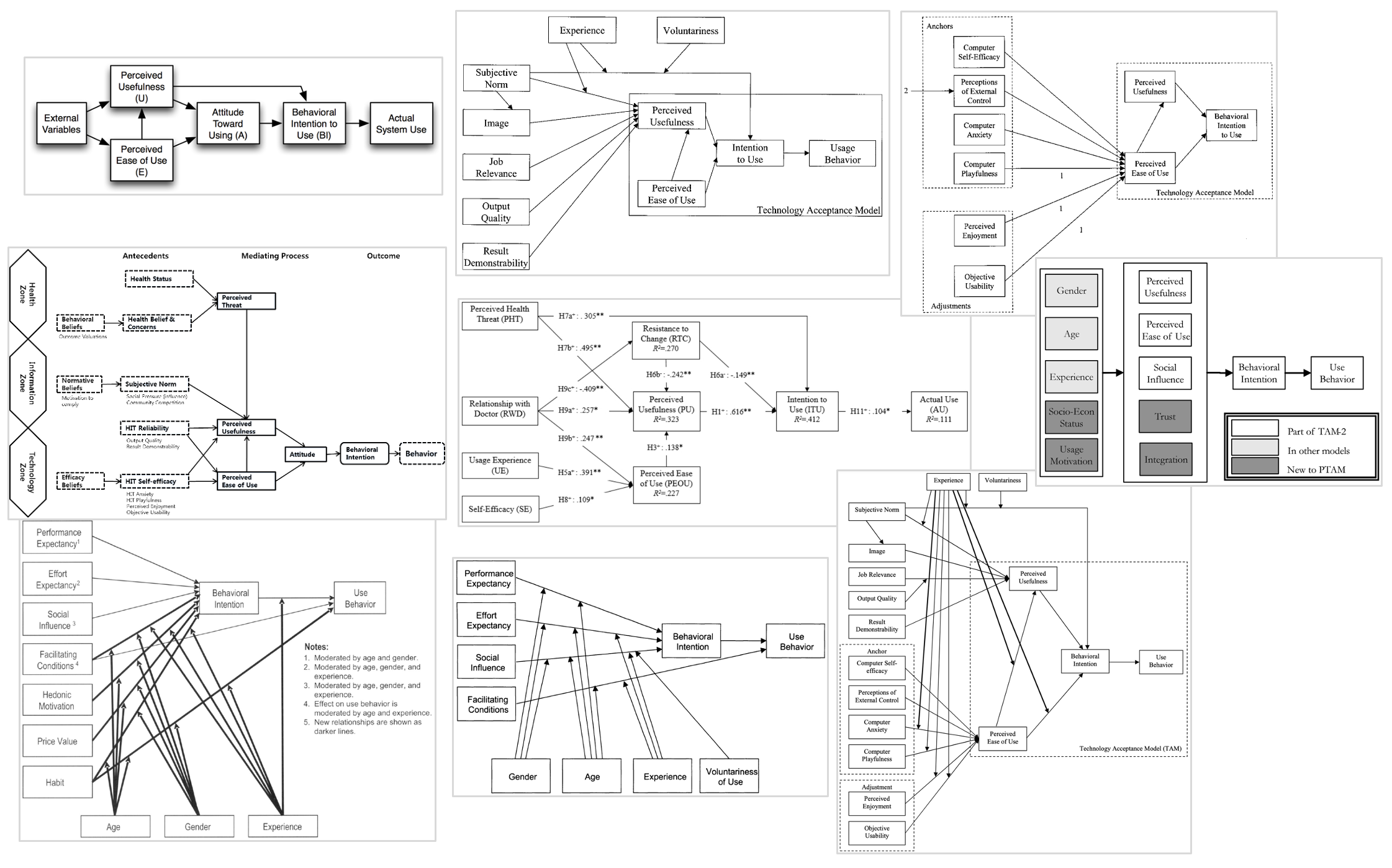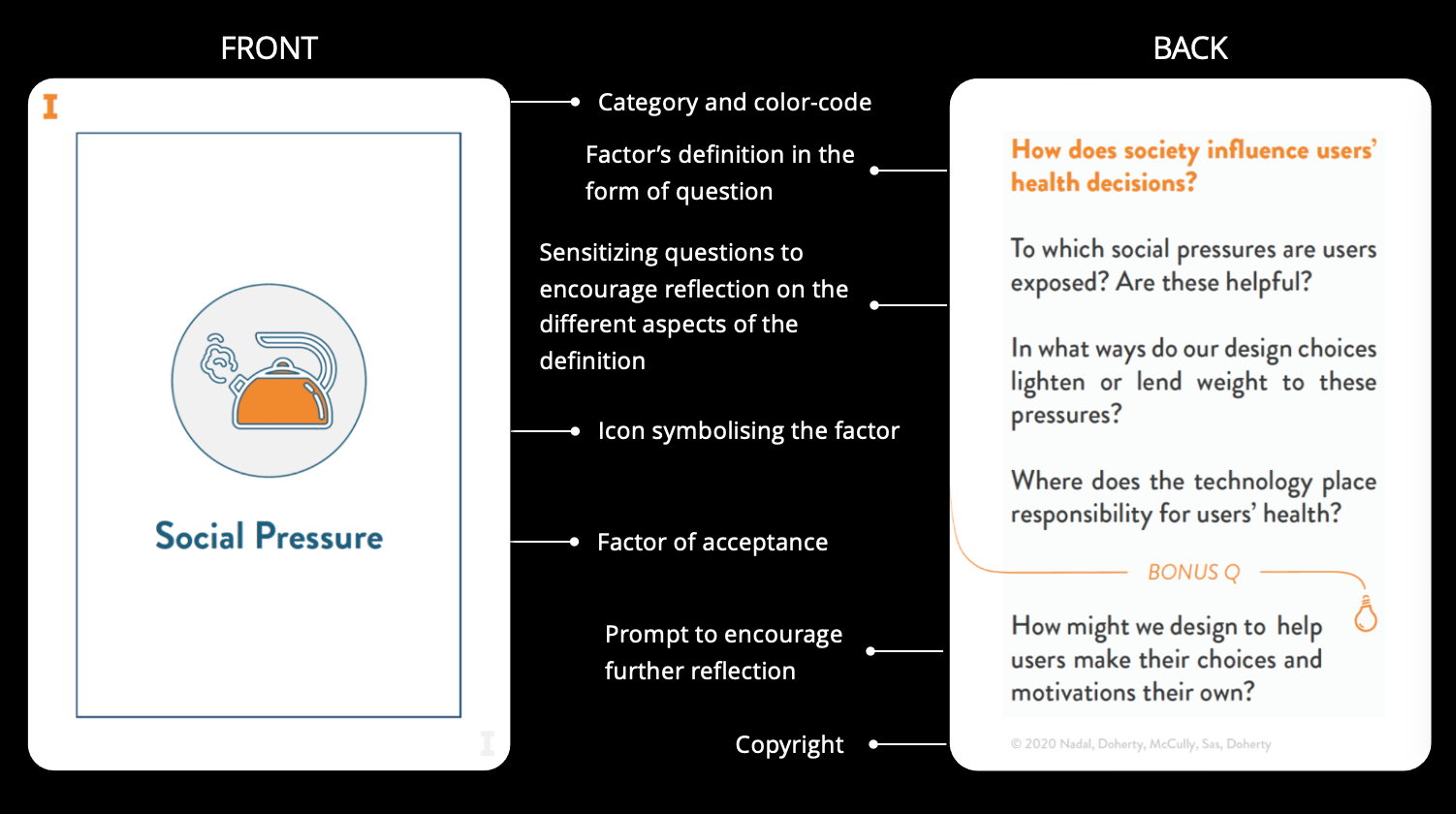Ever bought a fitness device and only used it a couple of times?
Any apps on your phone that you have not opened in the past year?
Technology abandonment is a long-standing issue for HCI designers.
In healthcare, technology is increasingly used to support diagnosis, treatment, and symptom monitoring. In this particular context, if I am not willing to use the technology, I might not be able to receive care. And similarly, if I give up the technology before completion of my treatment, I might not get its full benefits.
The research explained in 30 sec.
Presented at the conference Conference on Human Factors in Computing Systems (CHI'22).
Check out the full research paper here or continue reading for a summary.
User acceptance, a key issue difficult to design for
Our acceptance of technology plays a key role in our willingness to take on and engage with a system. That’s why when creating new healthcare technologies, designers should address the potential barriers (and facilitators) of user acceptance.
When looking at how HCI designers address this question, we noticed a gap between theory and practice.
In fact, facing the very dense research field that is technology acceptance, designers were often unsure of how to use existing theories in their own practice.

Making acceptance theories accessible with the TAC Toolkit
To help bridge this gap, we created the Technology Acceptance (TAC) Toolkit with the aim to help designers create health technologies
that 1) people are willing to use, and 2) keep using in the long term.
Validated user acceptance models as theoretical basis
Following a review of the literature, we selected validated user acceptance models as theoretical basis for the TAC toolkit.
First, we considered the models and extensions that constitute the theoretical
foundations of technology acceptance: these include the TAM (F. D. Davis et al., 1989), TAM2 (Venkatesh & Davis, 2000), TAM2’ (Venkatesh, 2000),
TAM3 (Venkatesh & Bala, 2008), UTAUT (Venkatesh et al., 2003).
Then, we included models focusing on pervasive technologies: UTAUT2 (Venkatesh et al., 2012), and PTAM (Connelly, 2007).
Finally, we incorporated acceptance models developed specifically for the healthcare context: HITAM (Kim & Park, 2012), Hsu et al.’s model (C.-L. Hsu et al., 2013),
Dou et al.’s model (Dou et al., 2017), Cheung et al.’s model (Cheung et al., 2019), Schomakers et al.’s model (Schomakers et al., 2019), and
Dhagarra et al.’s model (Dhagarra et al., 2020).
Bridging the gap between theory & design practice
We chose the design cards format to translate this dense set of theories into a tool accessible to designers, whether they are expert or novice. The deck of TAC cards incorporates 16 factors of user acceptance, extracted from the validated models.

The 16 TAC design cards.
Let's zoom on the TAC cards & their context of use
Each of the TAC cards represents a single acceptance factor. On the front, the factor's name, icon, and card category. On the back, a series of sensitizing questions to encourage designers' reflection.

One of the TAC design cards.
The TAC toolkit is primarly intended to be an exploratory design method. It can be used early in the design process, for example when working with personas and scenarios.
A crucial aspect of user acceptance is that it evolves over time.
Therefore, we strongly encourage designers to use temporal scenarios that explore the user journey across the 3 stages of the Technology Acceptance Lifecycle. As an example, we propose these 8 temporal milestones:

Putting the TAC Toolkit to the test
The TAC Toolkit was evaluated across a series of 7 workshops. These workshops involved a total of 21 digital health designers, from academia & industry, across Europe/Asia, and with various levels of expertise. During the workshops, the designers worked in groups of 3 with the toolkit to co-design health technologies related to the Personas and Scenarios from the starter pack.
For the 21 participants, this workshop setting involved a combination of physical and virtual. Indeed, the designers could use the physical TAC cards on their desk, but also interact together with the virtual version of the cards on the TAC think-space.

TAC think-space, used during the workshops.
Following the workshops, we interviewed each designer about their experience designing with the TAC Toolkit and its use in this particular hybrid setting.
What designers thought of the TAC Toolkit
Designers' feedback indicated that the TAC toolkit was very well received. After 2 hours designing with the TAC Toolkit, here is what they say about it:
The designers reported that working with the toolkit helped them in several ways by:
- Challenging their preconceptions on user acceptance.
- Providing a clear understanding of the factors of acceptance.
- Shaping their design decisions to support user acceptance.
- Facilitating conversations, regardless of designers’ experise.
- Supporting a more ethical design.
In conclusion, the TAC Toolkit shows great potential to complement a user-centred design process, in order to create health technologies that are accepted by people.
To cite this research
Nadal, C., McCully, S., Doherty, K., Sas, C., Doherty, G. (In Press) The TAC Toolkit: Supporting design for user acceptance of health technologies from a macro-temporal perspective. In Proceedings of the 2022 CHI Conference on Human Factors in Computing Systems. ACM. Best Paper Award.